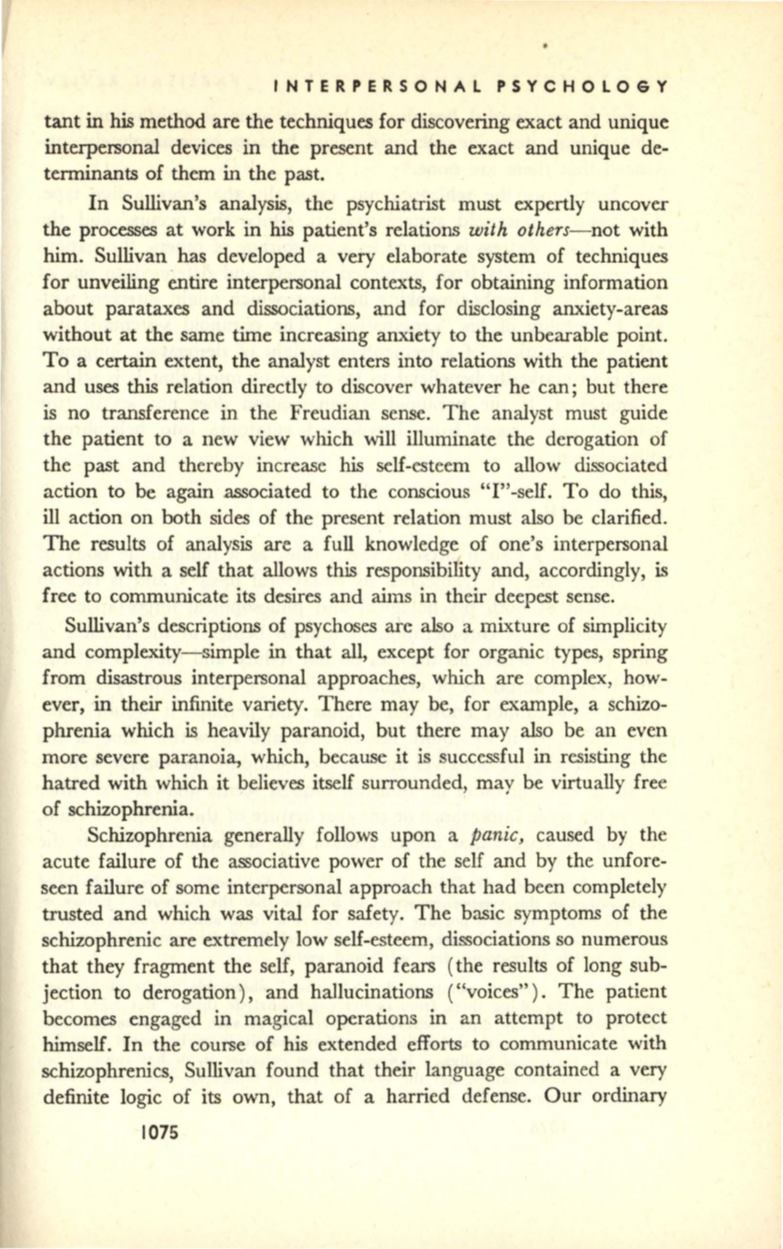
INTERPERSONAL PSYCHOLOGY
tant in his method are the techniques for discovering exact and unique
interpersonal devices in the present and the exact and unique de–
terminants of them in the past.
In Sullivan's analysis, the psychiatrist must expertly uncover
the processes at work in his patient's relations
with others-not
with
him.
Sullivan has developed a very elaborate system of techniques
for unveiling entire interpersonal contexts, for obtaining information
about parataxes and dissociations, and for disclosing anxiety-areas
without at the same time increasing anxiety to the unbearable point.
To a certain extent, the analyst enters into relations with the patient
and uses this relation directly to discover whatever he can; but there
is no transference in the Freudian sense. The analyst must guide
the patient to a new view which will illuminate the derogation of
the past and thereby increase his self-esteem to allow dissociated
action to be again associated to the conscious "1"-self. To do this,
ill
action on both sides of the present relation must also be clarified.
The results of analysis are a full knowledge of one's interpersonal
actions with a self that allows this responsibility and, accordingly, is
free to communicate its desires and aims in their deepest sense.
Sullivan's descriptions of psychoses are also a mixture of simplicity
and complexity-simple in that all, except for organic types, spring
from disastrous interpersonal approaches, which are complex, how–
ever, in their infinite variety. There may be, for example, a schizo–
phrenia which is heavily paranoid, but there may also be an even
more severe paranoia, which, because it is successful in resisting the
hatred with which it believes itself surrounded, may be virtually free
of schizophrenia.
Schizophrenia generally follows upon a
panic,
caused by the
acute failure of the associative power of the self and by the unfore–
seen failure of some interpersonal approach that had been completely
trusted and which was vital for safety. The basic symptoms of the
schizophrenic are extremely low self-esteem, dissociations so numerous
that they fragment the self, paranoid fears (the results of long sub–
jection to derogation), and hallucinations ("voices"). The patient
becomes engaged in magical operations in an attempt to protect
himself. In the course of his extended efforts to communicate with
schizophrenics, Sullivan found that their language contained a very
definite logic of its own, that of a harried defense. Our ordinary
1075


